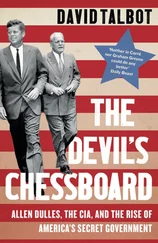Jessner eventually started to dig into hundreds of violent crimes linked to the Aryan Brotherhood. Working with an officer from the Bureau of Alcohol, Tobacco and Firearms named Mike Halualani-a half-Japanese, half-Hawaiian agent who was as brash as Jessner was genteel-Jessner attempted to devise a strategy to break the gang’s stranglehold. But the more he investigated the more it seemed that the gang defied any conventional notion of a prosecution. Jessner told me that he kept asking himself, “How do you stop people who see a murder rap as a badge of honor? How do you stop people who have already been stopped by the law and sentenced to life imprisonment?”
By the nineteen-nineties, authorities, hoping to create at least some deterrent, and to protect other inmates, had relocated nearly all the Aryan Brotherhood’s top leaders, including the Baron, to what were then a new breed of prisons, called “supermaxes.” These prisoners were held in single cells, locked down nearly the entire day, without, as one gang member put it, “seeing fresh earth, plant life, or unfiltered sunlight;” they exercised alone in an indoor cage, were fed meals through a tray slot, and had little, if any, human contact.
In the case of Silverstein, who was already serving multiple life sentences when he killed the guard Clutts, in 1983, the Bureau of Prisons had established a separate unit for him at Leavenworth, where he was held in a Hannibal Lecter-style cage. Though Silverstein continued to sketch, he was for years not permitted to have a comb or a hairbrush, and when the reporter Pete Earley visited him, in the late eighties, he had long wild hair and a beard. “They want me to go crazy,” he told Earley. “They want to point their fingers at me and say, ‘See, see, we told you he is a lunatic.’… I didn’t come in here a killer, but in here you learn hate. The insanity in here is cultivated by the guards. They feed the beast that lingers within all of us… I find myself smiling at the thought of me killing Clutts each time they deny me a phone call, a visit, or keep the lights on. I find it harder and harder to repent and ask for forgiveness, because deep inside I can feel that hatred and anger growing.”
Jessner told me, “Within the gang’s lore, Silverstein has become its Christ figure.”
Even under these conditions, which some civil-rights groups considered a violation of human rights, the Aryan Brotherhood continued to flourish. Its members developed elaborate ways to communicate. They dropped notes through pipes that were connected to nearby cells; they tapped Morse code on prison bars; they forced orderlies to pass kites; they whispered through vents in “carnie,” a convoluted, rhyming code language. (“Bottle stoppers” meant “coppers.”) In addition, the leaders had developed a devoted coterie of women on the outside who had fallen in love with them through visits and correspondence and could serve as couriers, relaying messages back and forth between members. One woman who cooperated in the gang’s illegal businesses later claimed she had Stockholm syndrome.
With the help of prison authorities, Jessner began to intercept a series of covert messages. Portions of the letters appeared to be blank, as if someone had been interrupted. After analysts applied heat with an iron and placed the paper under ultraviolet light, letters would appear, revealing “a secret message,” as the F.B.I. wrote in an internal report. Cryptographers analyzed the “ink” of one such note, and discovered that the message was written with urine. The message itself was baffling; it had been scrambled into a code. “They have certain words that mean a certain thing,” one former member said. “If they tell you that ‘somebody’s going to build a house in the country,’ the prevalent word… is ‘country,’ because… that means ‘murder.’”
Jessner and his team spent hours breaking sentences apart and reconstructing them. He started to see patterns in the messages: “baby boy” meant yes, and “baby girl” meant no. One day, prison authorities intercepted a note sent by T. D. Bingham, the A.B. commissioner, to the Baron. It said, “Well I am a grandfather, at last my boy’s wife gave birth to a strapping eight pound seven ounce baby boy.” Jessner feared that the reference to the baby’s weight was code for 187, the California legal statute pertaining to murder; the fact that the baby was a boy suggested that a hit had been approved. Then analysts noticed that several of the letters had squiggly marks, almost like tails, on them. The words “eight pound,” for instance, had curlicues on the letters “e,” “g,” “n,” and “d.” It appeared to be a code within a code.
After scrutinizing the letters, authorities determined that the note was in fact written in a biliteral cipher, a method invented by Sir Francis Bacon, the seventeenth-century philosopher. It involved using two distinct alphabets, depending on how the letters were drawn. An unadorned “c” referred to alphabet A, whereas a curlicued “c” represented alphabet B. Investigators went through the note, categorizing each letter by alphabet until they had a cluster of letters that all seemed to be a play on the initials of the Aryan Brotherhood:
bbbaaaaabbabaaabababbabaaababaaabaaabbbababbaabbaaabbaabbabb-baabb…
It still made no sense. But after analysts broke the letters into clusters of five, Jessner says, they started to realize that each cluster represented an individual letter. Thus “ababb” was an “A,” “abbab” was a “B,” and so on.
They had finally cracked the code; now they went through the letter again. It said:
Confirm message from Chris to move on DC.
Officials knew that “DC” meant the D.C. Blacks, a prison gang against whom the Aryan Brotherhood had recently declared war. But, by the time authorities decoded the letter, two black inmates had been found dead in their cells in Lewisburg, Pennsylvania: one was stabbed thirty-four times, the other thirty-five.
The Brotherhood began developing murder schemes that could succeed even in maximum-security environments. They started to befriend their foes, so they could one day “rock them to sleep.” At Pelican Bay, where friends could apply to be cellmates, they sought to room with the very men they wanted to kill. “Deception was key,” one member who strangled his cellmate acknowledged. Between 1996 and 1998, A.B. members at Pelican Bay murdered three inmates, and were suspected in at least three additional slayings.
In many cases, officials in the correctional system seemed powerless to stop the gang. At Folsom prison, after A.B. leaders were sequestered from the general population, the gang’s associates protested by indiscriminately stabbing rapists and child molesters until the leaders were released. A few prison officials actually facilitated the Brotherhood’s activities. At the supermax prison in Colorado, a guard was accused of becoming an Aryan Brotherhood disciple; at Pelican Bay, two guards were discovered encouraging the beatings of child molesters and sex offenders by gang members. A local prosecutor warned that officials at Pelican Bay were unable to stop a “reign of terror.”
By the mid-nineties, Jessner says, the gang had evolved to the point that it had to appoint members to lead different branches of its operations-such as the “department of security” and the “department of narcotics.” Though the Aryan Brotherhood’s profits never rivalled those of the Italian Mafia or outside drug lords, its reputation for violence did. The gang had some of the most highly trained and ruthless hit men in the country. And inside the prison system the Baron had so grown in stature that he overshadowed the imprisoned head of the Italian Mafia, John Gotti. According to authorities, in July, 1996, after a black inmate attacked Gotti at Marion prison, bloodying his face, the Mafia leader, who seemed ill prepared for the explosion of prison violence, sought the Baron’s help in murdering his assailant. The Brotherhood seemed receptive to the idea-the Baron allegedly used sign language to communicate the price of the hit to an associate-but Gotti died before the hit could be executed.
Читать дальше











